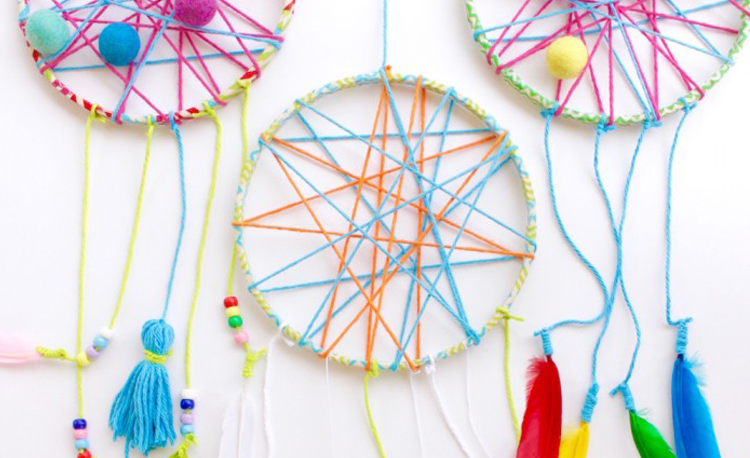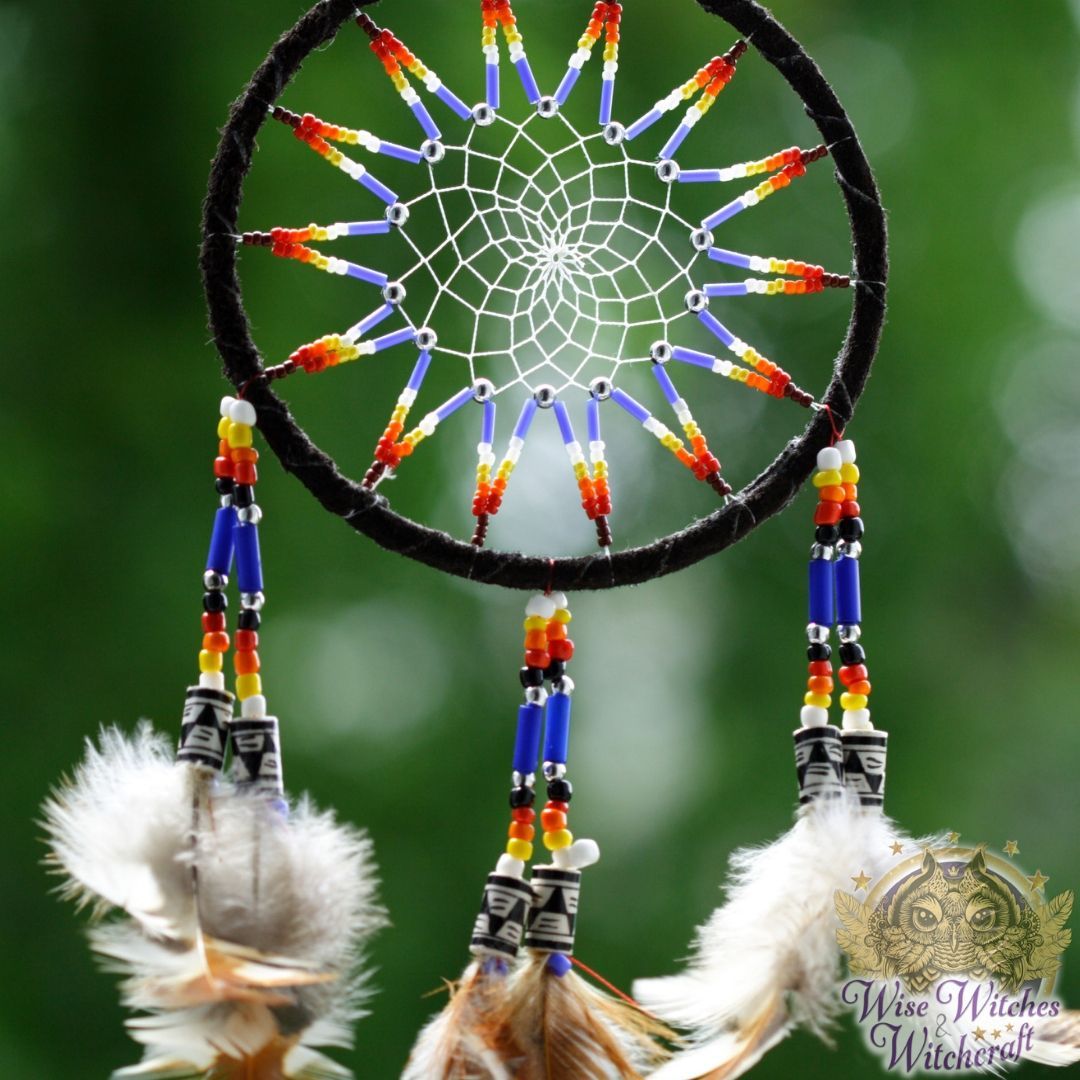Making And Selling Dream Catchers 6,6/10 2012 reviews
Learn how to make a DIY dream dream catcher. This dream catcher features long, colorful ribbons and beads that give it a lovely, boho feel. For my daughter’s colorful boho room makeover, she wanted to make a dream catcher. I had one when I was a kid, so I was willing to help her out. Ball of wool to wrap round the hoop of your dream catcher.; Two clothes pins.; Something to make the hoop - we used homeschool cane but you could use pipe cleaners or buy a metal hoop.; You can make the web of your dream catcher.
Printable Dream Catcher Instructions
Native American Technology and Art
| Instructions for Making Dream Catchers
|
| 1. Start with a 2 - 6 ft. length of fresh Red Willow (Red Osier Dogwood), or soaked Grapevine (dried grapevine is available in the craft department of many stores) Carefully bend the vine around to form a circle with a 3 - 8 in. diameter. You decide on the diameter, but traditionally dreamcatchers are no wider than adult's hand. 2. If you are using thin Red Willow or grapevines, twist the piece you are bending, around the circle you have made to strengthen the hoop. |
| 3. Use 4-16 ft. of strong but thin string (the length is determined by the diameter of the hoop). Knot a loop in one end from which you will hang your dream catcher when it is done. 4. Tie the hanging loop around the top of your dream catcher (or at the weakest point of your hoop). |


| 5. The dream catcher repeats the same stitch from start to finish. To start, hold the string and place it loosely over the top of the hoop. Move the string around to the back of the hoop (forming a hole) and pull the string back through the hole you just made. |
| 6. Pull each stitch taught but not too tight or it will warp the hoop of the dream catcher and it will not lie flat when it is done. |

| 7. Continue the same stitch for the first round around the hoop of the dream catcher. Space the stitches evenly, about 1 1/2 to 2 in. apart (making 7 to 13 stitches around the hoop). 8. The last stitch of the first round should be placed about a half inch away from the the hanging loop. |
| STITCH FOR THE SECOND ROUND: 9. On the second and subsequent stitching rounds, place the string around the center of each stitch from the previous round (rather than around the hoop). 10. As you pull each stitch tight, the string from the previous round should bend towards the center of the hoop slightly, forming a diamond shape. You should see the spider web beginning to form. 11. On the third or fourth round add a bead to represent the spider in the web. Simply place the bead on your string and continue stitching as usual. |
| 12. Continue stitching towards the center of the hoop. Eventually, the stitches become so small that it is difficult to pass the string through. Make sure you leave a hole in the center of the dreamcatcher. 13. Stop stitching at the bottom of the hole in the center of the dream catcher. End by stitching twice in the same place, forming a knot, and pull tight. |
| 14. You should have 6 - 8 in. of string to tie 2 or 3 feathers which dangle from the center of the dreamcatcher. Tie on 2 or 3 feathers and knot. |
| 15. Wrap a 1 in. square of felt around the knot of string and over the base of the feathers. Tie two 4 In. pieces string around the wrapped felt. 16. Hang over sleeping place. Sweet Dreams!! |
 Origin of the Dream Catcher
Origin of the Dream CatcherReturn to Willow Branches and Other Twigs and Roots Background
Branches, Twigs & Roots Bibliography and Books to Buy On-Line
Making And Selling Dream Catchers
Text and Graphics
© 1994 - Tara Prindle
unless otherwise cited. |
Making And Selling Dream Catchers Tips
If dreamcatchers protect children from nightmares, Carol Edwards is ensuring that all the kids in Tuolumne County have sweet dreams. Edwards, 52, of Sonora, is hoping her dreamcatcher — 28.3 feet in circumference and 9 feet in diameter — will make the pages of the “Guinness Book of World Records.” If you are interested you can write the article author at rhowes@uniondemcrat.com
ANDRÉ'S NOTEI am an enrolled member of the Karuk Tribe. We do not make dreamcatchers. This woman is guilty of cultural appropriation.
please read: http://www.aaanativearts.com/article225.html
Though some tribal members say they see no problem with the practice, others regard the marketing of dream catchers as another example of their culture being picked apart. When Millie Benjamin was growing up, she spent her nights sleeping under a dream catcher, a traditional Indian object believed to ward off nightmares. Benjamin drew comfort from her dream catcher. These days, though, she shakes her head to see them worn as earrings, hanging from car windshields and even sold as key chains in convenience stores. 'It has gotten out of hand. It's disrespectful for our people. It means something to us, it's a tradition,' said Benjamin, a member of the Mille Lacs Band of Ojibwe. Benjamin isn't the only American Indian dismayed by the marketing of dream catchers. Though some tribal members say they see no problem with the practice, others regard the marketing of dream catchers as another example of their culture being picked apart. 'In order to be a good, traditional person, you have to live that life. There's things you have a right to wear and things you do not,' Benjamin said. According to Indian tradition, dream catchers should resemble a spider web and are to be placed above a baby's cradle. The web filters out nightmares, allowing only good dreams to pass through to the sleeping child below. A dream catcher is supposed to be made in intricate, ceremonial steps that include giving thanks for the spirit of the wood used in it. Those steps fall by the wayside when a person buys a make-it-yourself kit from a discount store, says Gerald White, a member of the Leech Lake Band of Ojibwe. 'The dream catcher, to us, is a sacred item,' White said. 'It's lost a lot of meaning, even in our own tribe. It's like losing our language, our culture -- another symptom of a larger thing.' White acknowledges that dream catchers are an important source of money for some Indians. Indeed, since the terror attacks of September 11, business has picked up, says Colleen Heminger-Cordell. Heminger-Cordell, a member of the Sisseton Wahpeton Sioux Tribe of South Dakota, has been making dream catchers since she took one apart and learned to put it together again 15 years ago. Her work, starting at $14.95 for a 3-inch dream catcher, is sold everywhere from a Paris boutique to a Sioux City, Iowa, strip mall. Most orders are from non-Indians who want more than 100 at a time, she said. 'I just never thought there would be that big of a market,' Heminger-Cordell said of the post-Sept. 11 demand. 'Companies are buying them wholesale.' Heminger-Cordell says she's never known anyone to be upset by her dream catchers, even though she sometimes embellishes them beyond the traditionally simple twine-and-wood design to satisfy personal requests, like a pink or blue catcher to give as a baby gift. At Lake Mille Lacs, the shiny string in Ruth Garbow's dream catchers reflects sparkles of light throughout the gift shop at the tribe's museum. Garbow, an Ojibwe, had a dream catcher over her bed as a child, as did her son. Now, Garbow makes the catchers and says it's important that customers understand their meaning. She sees the dream catchers as a chance for her to display her talents. 'If people like and enjoy having Indian crafts. I feel great,' Garbow said. But Garbow puts limits on the selling of Indian culture, including jewelry that uses the four colors of the medicine wheel -- which are supposed to be restricted to certain rites -- and some ceremonial dresses. 'People tend to adopt things they like from other cultures, of course, but they may just put it on because of what it looks like without thinking where it comes from and what it's for. You don't really care for that culture then,' White said.Dark Feather Red Eagle, a storyteller and elder of the Pine Ridge Lakota Sioux, learned how to make dream catchers from a Cree woman three decades ago. He has sold more than 1,000 dream catchers in six years, ranging in color from aqua to peach. Selling at $3 to $35 apiece, the dream catchers are made by his family at their Crowley, Texas, home. Red Eagle, 79, said no one has objected to his work. He would never sell sacred objects like medicine pouches and ceremonial pipes, he said. 'A dream catcher is supposed to serve a purpose as far as dreams are concerned, as far as children are concerned, and that's not something that's meant to be sacred,' Red Eagle said. Shortly after she was born on the Coutchiching reservation in Canada, Martha Jourdain had a dream catcher placed over her cradle. When she was expecting children of her own, Jourdain made dream catchers using ceremonial rites taught by her ancestors. Now, she's taught her own children the tradition. Jourdain, who is a cultural assistant with the Fond du Lac tribe in northern Minnesota, thinks dream catchers should be given away, not sold. 'It's kind of like they're making a mockery of it because it's a sacred item and sold in convenience stores all over,' Jourdain said. Recently, Jourdain has been teaching her children how to make traditional dance outfits, another item that has been showing up in shops around the country. 'There's nothing I can do about it,' Jourdain said. 'It's happening everywhere.' Benjamin finds comfort in knowing the truth behind the dream catcher. 'As long as I know what it really means, I'm happy, and that's what I teach my children,' she said. 'We know what it is and what it does.'



